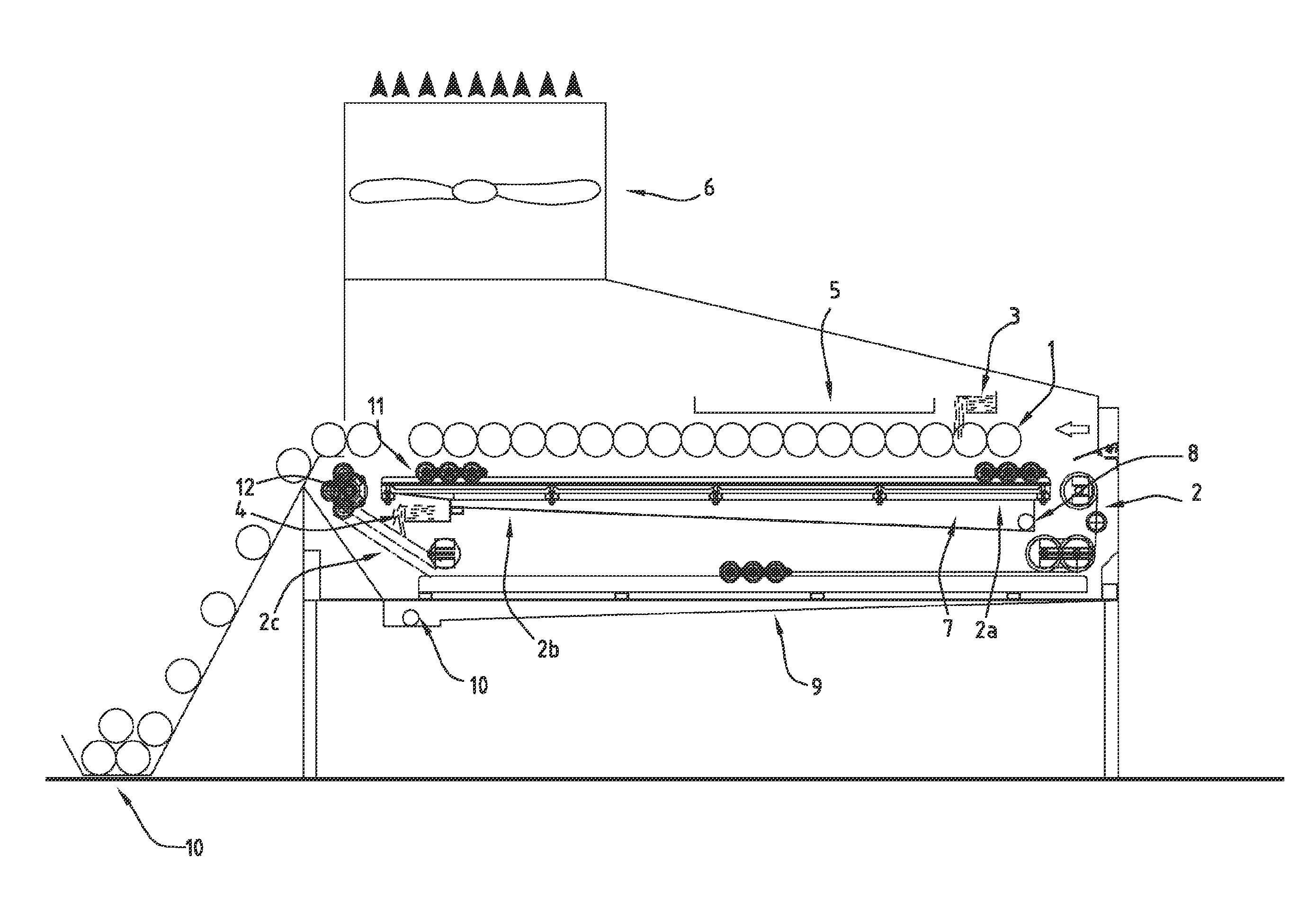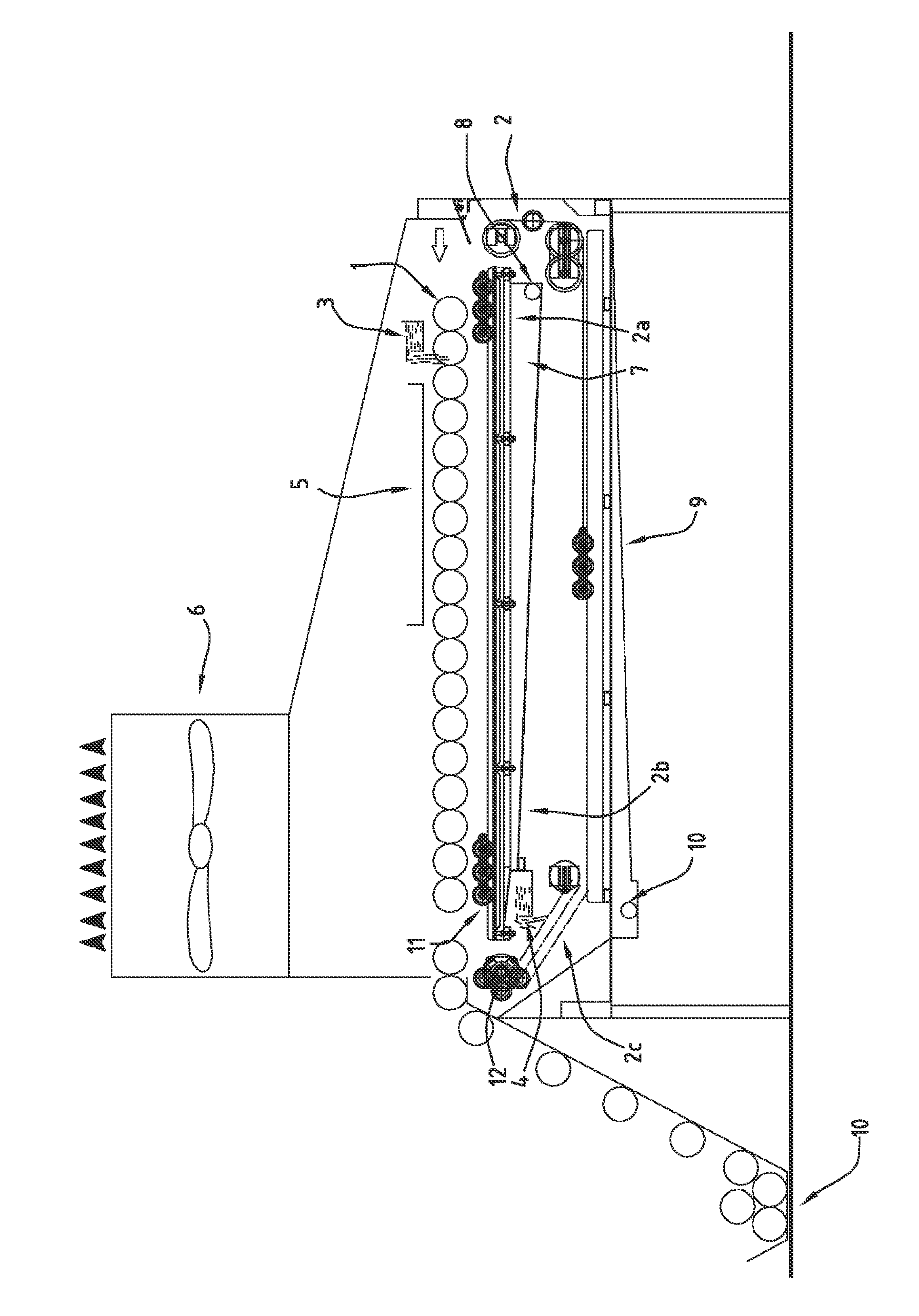Method for Coating Food Products
a technology for food products and coatings, applied in the field of coating food products, can solve the problems of clogging mechanical devices, polluting the atmosphere, dry resin residues that block the mechanical devices, etc., and achieve the effect of improving the solubility of resin and satisfactory quality
Inactive Publication Date: 2011-10-06
XEDA INT SA
View PDF2 Cites 30 Cited by
- Summary
- Abstract
- Description
- Claims
- Application Information
AI Technical Summary
Benefits of technology
[0013]The use of alcohol as a solvent is particularly advantageous in that it acts to disinfect or sterilize the food product of any contamination on its surface.
Problems solved by technology
However, their use is limited due to their poor solubility in ethanol, a solvent approved for use with food products.
This manner of application, like misting or atomization, entails the formation of a substantial fog, which spreads over a wide area of the conveyor belt and mechanical parts, and also pollutes the atmosphere.
After the evaporation of the solvents, the fine droplets then leave a dry resin residue that clogs the mechanical device.
Furthermore, it has been observed that application by spraying, misting, or atomization does not allow for satisfactory coverage: in fact, pressurized application results in partial evaporation of the solvent, such that solid particles are applied to the fruits or vegetables, causing localized accumulation of solid residues.
Non-homogeneous coverage does not allow for proper inspection for loss of weight and / or the breathing of fruits or vegetables.
Lastly, these pressurized systems are complex and costly.
In fact, a substantial loss of resin solubility in said water-soluble solvent may result in the presence of residual humidity (e.g., water condensation on the food products to be treated, ambient humidity).
This loss of solubility also causes a low-quality coating, such that the food products so treated will not have the desired shiny appearance.
Method used
the structure of the environmentally friendly knitted fabric provided by the present invention; figure 2 Flow chart of the yarn wrapping machine for environmentally friendly knitted fabrics and storage devices; image 3 Is the parameter map of the yarn covering machine
View moreImage
Smart Image Click on the blue labels to locate them in the text.
Smart ImageViewing Examples
Examples
Experimental program
Comparison scheme
Effect test
example 2
[0131]A solution is prepared by shaking from 5.5 g glyceryl abietate resin, 34.5 g ethyl alcohol, and 10 g limonene. The solution thus obtained is clear and stable.
example 3
[0132]A solution is prepared by shaking, from 9 g shellac resin and 91 g ethyl alcohol. The solution thus obtained is clear and stable.
example 4
[0133]A solution is prepared by shaking, from 9 g shellac resin, 89 g ethyl alcohol, and 2 g ammonia. The solution thus obtained is clear and stable.
the structure of the environmentally friendly knitted fabric provided by the present invention; figure 2 Flow chart of the yarn wrapping machine for environmentally friendly knitted fabrics and storage devices; image 3 Is the parameter map of the yarn covering machine
Login to View More PUM
 Login to View More
Login to View More Abstract
A method for coating food products includes applying, on food products, a composition containing one or more film-forming agents in a solvent, wherein application is carried out by atmospheric pressure showering of the composition or by immersion into the composition.
Description
FIELD OF THE INVENTION[0001]The present invention relates to a method for coating food products.BACKGROUND INFORMATION[0002]Fresh foods, such as fruits and vegetables, in particular citrus fruits, are generally coated before marketing to improve their shelf life and appearance for the consumer.[0003]Resins used for food purposes are used, in particular, to coat citrus fruits. However, their use is limited due to their poor solubility in ethanol, a solvent approved for use with food products.[0004]The current practice is to apply these resins or waxes for use in food products by spraying or misting with spray guns. Thus, FR 0753308 discloses the application of resin and terpene compounds on fruits or vegetables by spraying the fruits or vegetables, which are placed on conveyor belts, with pressurized jets. This manner of application, like misting or atomization, entails the formation of a substantial fog, which spreads over a wide area of the conveyor belt and mechanical parts, and a...
Claims
the structure of the environmentally friendly knitted fabric provided by the present invention; figure 2 Flow chart of the yarn wrapping machine for environmentally friendly knitted fabrics and storage devices; image 3 Is the parameter map of the yarn covering machine
Login to View More Application Information
Patent Timeline
 Login to View More
Login to View More IPC IPC(8): A23B7/16A23P1/08
CPCA23B7/154A23B7/16A23L3/3463A23P1/085A23L3/3517A23P1/084A23L3/3508A23P20/15A23P20/17Y02A40/90
Inventor SARDO, ALBERTO
Owner XEDA INT SA
Features
- Generate Ideas
- Intellectual Property
- Life Sciences
- Materials
- Tech Scout
Why Patsnap Eureka
- Unparalleled Data Quality
- Higher Quality Content
- 60% Fewer Hallucinations
Social media
Patsnap Eureka Blog
Learn More Browse by: Latest US Patents, China's latest patents, Technical Efficacy Thesaurus, Application Domain, Technology Topic, Popular Technical Reports.
© 2025 PatSnap. All rights reserved.Legal|Privacy policy|Modern Slavery Act Transparency Statement|Sitemap|About US| Contact US: help@patsnap.com


